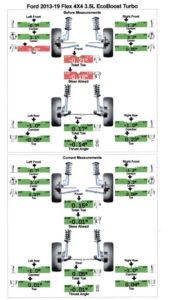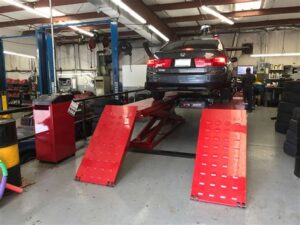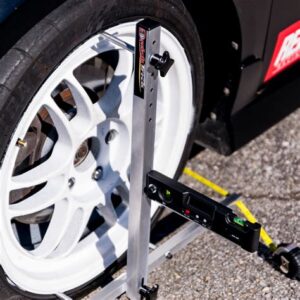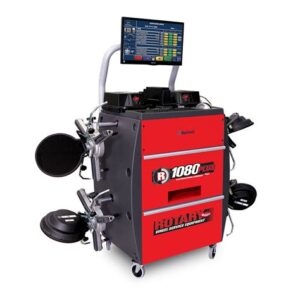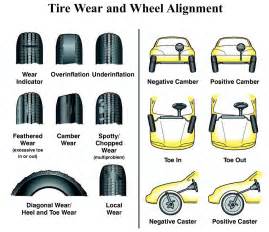Learn about car alignment, its signs, impacts, and benefits, plus how often you should check your vehicle for optimal performance and safety.Maintaining your vehicle is essential for ensuring a smooth and safe driving experience, and one crucial aspect of car maintenance is alignment. But what exactly is car alignment, and why does it matter? Misalignment can lead to several issues, including uneven tire wear, poor handling, and decreased fuel efficiency. In this blog post, we’ll explore the signs that indicate your car may be misaligned, the impacts it can have on your vehicle’s performance, and how often you should check for alignment issues. We’ll also discuss the benefits of regular alignments to keep your car running smoothly and efficiently. Whether you’re a seasoned driver or a new car owner, understanding the importance of proper alignment can help you save money and extend the life of your vehicle.
What is car alignment?
Car alignment refers to the adjustment of a vehicle’s suspension system, which connects the car to its wheels. Proper alignment ensures that all four wheels are set to the same parallel position, maintaining the optimal angle to the road. Over time, as you drive, factors such as potholes, curb impacts, or normal wear and tear can cause the wheels to become misaligned.
The alignment process involves adjusting several angles to ensure that the tires make proper contact with the road surface. These angles include camber, caster, and toe. When your wheels are aligned correctly, it can greatly enhance the vehicle’s handling and reduce tire wear, ultimately leading to a smoother driving experience.
Having your car’s alignment checked regularly can also prevent other costly repairs down the line. By comparing the factory specifications to the current settings of your vehicle, a technician can identify any misalignment issues and correct them before they escalate.
Signs of misalignment
If you’re wondering about the signs of misalignment, it’s crucial to stay vigilant to ensure your vehicle operates safely and efficiently. Misalignment can cause various performance issues, often going unnoticed until the problems become severe.
Here are some common indicators of a misaligned car that you should be aware of:
- Uneven tire wear: If you notice that the tread on one side of your tires wears down faster than the other, this is a strong sign of misalignment.
- Vehicle pulling: A car that pulls to one side while driving straight indicates that the wheels may not be aligned correctly.
- Steering wheel off-center: If your steering wheel is not aligned with the straight position of your wheels, it’s time to check the alignment.
- Vibration: Experiencing excessive vibrations in the steering wheel can also point to alignment issues.
- Increased fuel consumption: Misalignment can cause your vehicle to work harder, which may lead to a drop in fuel efficiency.
Regularly checking for these signs of misalignment can help you address potential issues before they escalate, ensuring a smoother and safer driving experience.
Impact of misalignment
Car misalignment can lead to a range of issues that affect both the vehicle’s performance and the safety of its occupants. When the wheels of a car are not properly aligned, it can cause uneven tire wear, reducing the lifespan of the tires and increasing the frequency of replacements. This not only incurs higher expenses but also compromises the vehicle’s handling and responsiveness on the road.
Another significant impact of misalignment is on fuel efficiency. When wheels are out of alignment, the engine has to work harder to move the vehicle in a straight line. This increased effort can lead to higher fuel consumption, resulting in more frequent trips to the gas station and increased overall costs for the driver over time.
Additionally, a poorly aligned car can compromise safety. Misalignment may cause the vehicle to pull to one side, making it harder to steer and increasing the risk of accidents, especially in adverse weather conditions. Regularly checking and maintaining proper wheel alignment not only enhances driving comfort but also ensures the safety of the vehicle and its passengers.
Frequency of check-ups
Maintaining proper car alignment is crucial for ensuring your vehicle’s safety and performance. However, many drivers overlook the frequency of check-ups required to keep their cars in optimal condition. It’s recommended that you have your car’s alignment checked at least once a year.
Additionally, you should consider having a car alignment check whenever you notice any changes in your driving experience. Factors such as hitting a large pothole, experiencing uneven tire wear, or feeling your steering wheel vibrate can all indicate a need for immediate alignment service.
Your driving habits can also influence how often you should get a check-up. If you regularly drive on rough roads or are an avid off-roader, more frequent alignments may be necessary. Ultimately, staying proactive about your car alignment can help you avoid more significant issues down the road.
Benefits of regular alignments
Regular car alignments offer a multitude of benefits that enhance vehicle performance and safety. When your vehicle is properly aligned, it ensures that all four wheels are angled correctly, promoting even tire wear and providing better handling. This consistency not only extends the life of your tires but also contributes to fuel efficiency.
One of the key advantages of maintaining regular alignments is improved safety. Misalignment can lead to unexpected pulling to one side, increasing the likelihood of accidents. By opting for consistent alignments, you help ensure that your vehicle remains stable and responsive, minimizing safety risks on the road.
Additionally, regular alignments can lead to cost savings over time. While it may seem like a minor maintenance task, addressing alignment issues promptly can prevent more serious problems that require expensive repairs. Maintaining your vehicle in good condition through routine alignments contributes to better overall performance and lowers the cost of ownership.
Frequently Asked Questions
What is a car alignment?
Car alignment refers to the adjustment of a vehicle’s suspension components to ensure that all wheels are positioned correctly relative to each other and the road.
How often should you get a car alignment?
It is generally recommended to get a car alignment every 6,000 miles or at least once a year, but you should also have it checked after any significant impact, such as hitting a pothole.
What are the signs that you need a car alignment?
Signs that you may need a car alignment include uneven tire wear, the steering wheel being off-center, the car pulling to one side, or a shaky steering wheel.
Can improper alignment affect fuel efficiency?
Yes, improper alignment can lead to increased tire drag, which can negatively affect fuel efficiency and lead to higher fuel costs.
How does driving style influence alignment needs?
Aggressive driving, frequent turns, and driving on rough or uneven surfaces can put additional stress on your vehicle’s tires and suspension, potentially requiring more frequent alignments.
What is the difference between wheel alignment and wheel balancing?
Wheel alignment involves adjusting the angles of the wheels to improve tire wear and vehicle handling, whereas wheel balancing involves ensuring that the weight of the tire and wheel is distributed evenly to prevent vibrations.
Can I check my car’s alignment at home?
While some basic checks can be done at home, such as visually inspecting tire wear patterns, it’s recommended to have an alignment performed by a professional for accurate measurements and adjustments.
